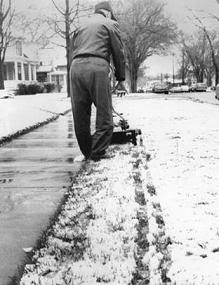Spring Lawn Care Tips – by Thornton Sprinklers
 Hey Homeowner: if you neglect spring lawn care you could end up paying for it the rest of the year. However spring lawn care doesn’t entail nearly the amount of work that you’ll do throughout the summer months.
Hey Homeowner: if you neglect spring lawn care you could end up paying for it the rest of the year. However spring lawn care doesn’t entail nearly the amount of work that you’ll do throughout the summer months.
I’ve put together a few tips I’ve learned as a Sprinkler professional about lawn care which could help you manage a healthier lawn this season and possibly need to see me even less. That would be a shame, in deed.
Raking will be your first task of spring lawn care. Thatch control is what you are after by doing this. You’ve got to remove the dead grass and crud that sits close to the roots.
Here is another good reason for a spring raking. Take a good look at the lawn and see if there are any matted patches, in which the grass blades are all stuck together. This can be caused by a disease known as “snow mold“. New grass may have difficulty penetrating these matted patches. But a light raking will be sufficient to solve this problem. Long grass can mat down, which encourages snow mold.
A good fertilizer containing slow-release nitrogen, along with adequate levels of potassium and phosphorus are needed for a healthy soil. You may need to run a sample of the soil to a testing place to visualize what the strategy should be. You may need to aerate the soil to give the yard good surface drainage.
Help the snow melt by spreading the piles of snow that you shoveled from the driveway and sidewalk onto the lawn and removing it from shady areas where it won’t melt even on sunny days. This keeps snow molds from developing as the ground thaws. A good time to topdress with compost is right after you aerate, all soils benefit from adding organic matter.
Crabgrass prevention is a very important spring lawn care chore. A dense and vigorous lawn will not allow weeds to invade. Spring is the time to prevent crabgrass. If your lawn is dense and vigorous, you won’t need chemical weed controls, all you’ll need are just normal fertilizers. By all means, over seed the patchy areas – bald spots.
Here’s what can happen if you begin watering too early in the spring: I know, it’s tempting to start watering in early spring, but there is usually plenty of rain to keep your lawn healthy. Wait to water until the weather gets warm and dry. When the grass begins to feel a bit of drought stress, this will actually cause the roots to grow deeper in search for water. Waiting until the weather turns hot and dry encourages deep rooting and that will prepare your lawn for the dog days of summer.
Owner/Operator Thornton Sprinklers

Leave a Reply